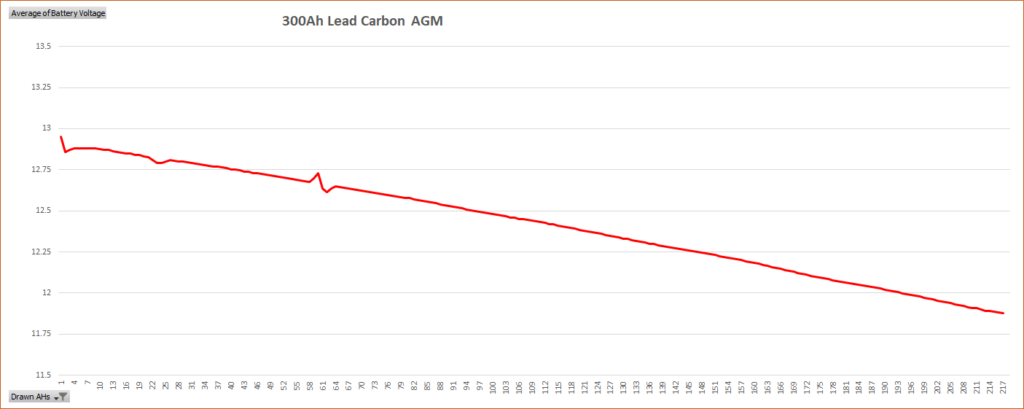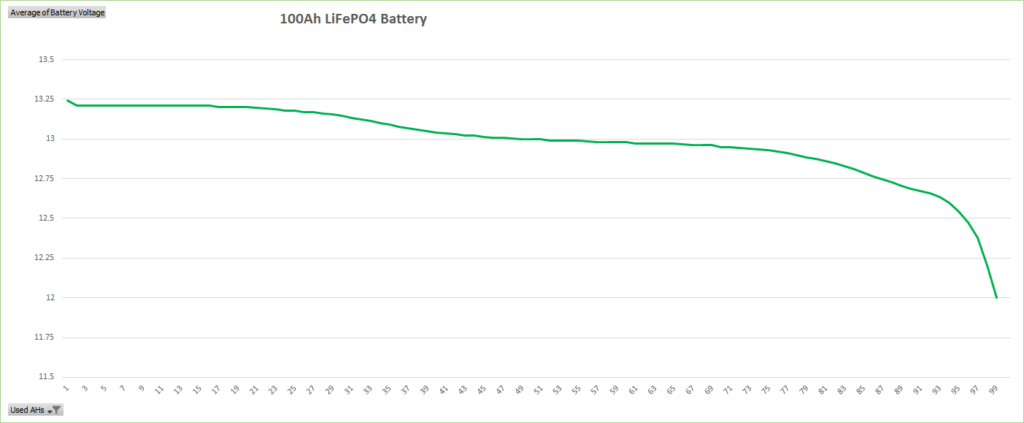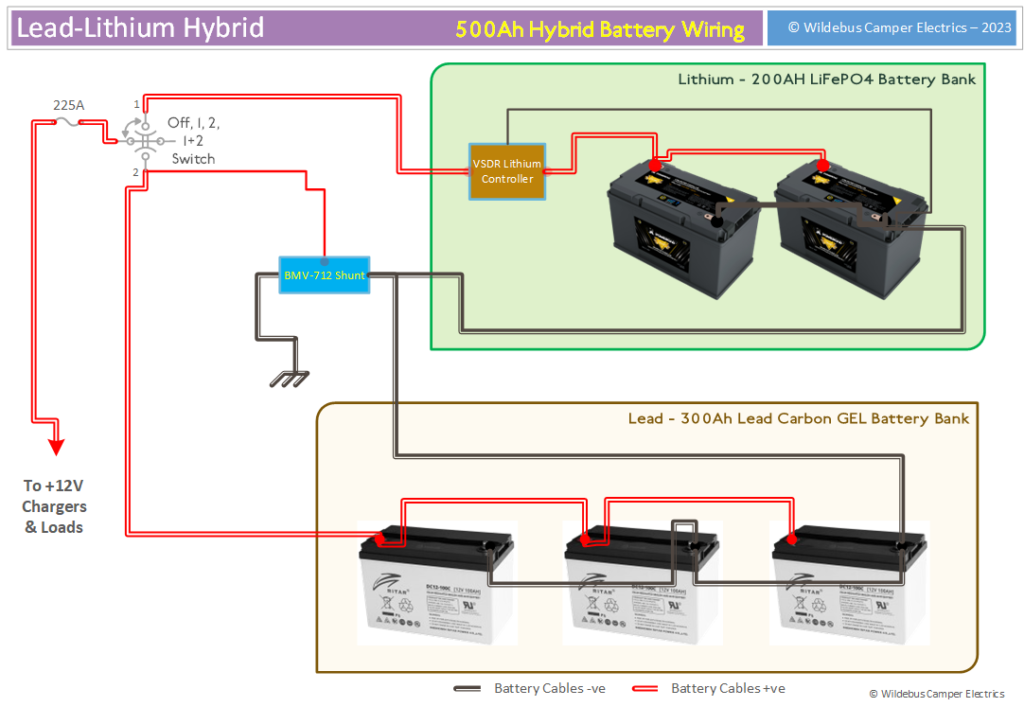Part 1
What is a Hybrid Battery Bank?
Generally, people install Lead Acid Batteries in their Recreational Vehicles and Boats to run the everyday Habitation/House services.
There is increased interest in Lithium Batteries (and particularly the LiFePO4 style of Lithium) as they offer various benefits and advantages over Lead – however up-front cost is definitely not one!
But what about the idea of using both at the same time, maybe taking advantage of both Lead and Lithium at the same time? Wouldn’t that be cool if it were possible? Well, maybe it is ….
Please Note: The content here is provided as general advice and information and is not specific to YOU or YOUR vehicle.
It should be used at your risk, is not warranted or guaranteed in any way and we are not liable for any losses or damage that might occur.
If this is not acceptable to you and you do not agree to this, do not read any further.
The Theory
A Lead Acid Battery when fully charge tends to settle at a voltage of around 12.8V. As the battery gets used, the voltage drops in a very linear fashion. The following is a graph of a Lead Acid Battery Bank I have and shows how the voltage drops as Amp-hours (essentially Watts) are taken out.

There is a little glitch at around 58Ah. That will be just a temporary monitoring glitch. Note that all the graphs you will see will be from my personal monitoring, not manufacturers test data from a lab. So this is real life, even if just representative of my own specific kit and setup.
A Lithium Battery has a very different voltage/Amp-hour pattern. The following graph is from a Discharge test I carried out on a 100Ah LiFePO4 Battery. The Lithium Battery’s voltage is pretty flat until it gets to a fairly high Depth of Discharge (DoD), at which point the voltage drop starts to increase and when the DoD starts to get close to 100%, the Voltage really drops away.

In the example here there is a bigger drop between around 20%-40%. I don’t know how typical this is of Lithium as it is not something I recall seeing on supplied datasheets. However, I saw this identical pattern on 3 different examples of the same LifePO4 battery so I am confident it is typical of at least some Lithium Batteries.
Ok, so how does that help us regarding combining Lead Acid and Lithium in a common battery bank? Well, when you look at the voltages patterns you see that when the Lithium is at around 85% DoD, the voltage is around 12.75V, which is around the point a Lead Acid battery starts to provide power. When the Lithium is at 95% DoD, A Lead Acid battery would have discharged around 30%.
So I am thinking – based on just the mathematics of Voltages and comparing the two sets of numbers – that initially the Lithium Battery would provide the energy until it was close to fully discharged and the Lead Acid would start to come into play and as the Lithium gets closer and closer to 100%DoD, the Lead comes in more and more.
My Setup
I have a Motorhome (Class C RV) and I wanted a good sized battery bank to provide power without having to worry overly about eeking out the last few AmpHours.
Here in the UK we are not overly blessed with Sunshine and Cloudless Days, so recharging with Solar, while great when it works, cannot be relied on. Generally I don’t have a massive power use, but I like to be able to use power if I have a need. Because of this I estimated a bank of around 300-400Ah would be about right to cover the extra contingency, but I couldn’t afford a Lithium Battery Bank of the capacity I would like at over £2,000 (~3,000 USD). Instead I plumped for a bank of Lead Carbon (PbC) AGM Batteries (Lead Carbon are an advanced development of Lead Acid Batteries with a number of distinct advantages over basic Lead Acid) and 3 x 100Ah of these Lead Carbons would be around £525 (~790 USD). These Lead Carbon Batteries can actually be taken down to 100% DoD, similar to Lithiums, so the 300Ah Bank does allow the potential of 300Ah of Energy if there is a situation that requires it. Although I don’t expect to pull more than 50Ah on a day to day basis, that size bank gives me flexibility for both extra demand and/or some consecutive days of poor quality charging.
I had, based on all this monitoring I tend to do on my vans, an idea of maybe using a Lithium battery for the day to day stuff and Lead as a backup (due to the price of Lithium).
Emily and Clark
I happened to come across (probably due to YouTubes algorithms and me watching lots of battery videos) a video that Clark, of Emily & Clark’s Adventure YouTube Channel on ‘Adding LITHIUM to your LEAD battery bank’.
Clark put into words and nice animations the same kind of thoughts I had had and convinced me, he having run a Hybrid Lead-Acid/Lithium setup for 18 months, that the maths would convert into a practical setup…
I spent some time conversing with Clark, both electronically and on the phone, where we brainstormed ideas and theories. And I was convinced from my own research and his experiences of combining the two technologies, that it would not only work, but work very well and quite possibly better than either a pure Lead Acid battery bank or a pure Lithium battery bank!
Updated for 2023.
The following is an updated description of what I am recommending to have a Lead-Lithium Hybrid Setup, and how you could convert your existing Lead system to a Hybrid setup. There are some tweaks compared to the original setup as I saw how things were working, but in essense, the setup I did as a trial in early/mid 2021 I am still running now and it is still working just as well – the theory that I was working to from the start has matched the reality in use for the last 2 years!
The key change from the initial setup is the installation of the special VSDR Lithium Controller that I developed once I had experience of how the Lead + Lithium combination was working. What the VSDR allowed me to do was to re-optimize the charging profiles of all the various chargers (Mains, B2B and Solar) for Lead whilst still providing the best Lithium charging at the same time. And being a standalone device with programmable control, it needs no external triggers to operate – just a connection to each battery bank and -ve connection to the battery.
With the above in mind, I have adapted this section and now the following is less of what MY particular Battery Bank setup is, but rather what YOU could do to potentially convert your own Lead Acid Battery system to a Hybrid Battery Bank setup.
- Get a Lithium Battery to add to the existing Lead Battery Bank.
- Fit the Wildebus VSDR Lithium Controller between the Lithium and the Lead Battery Banks. The VSDR controls the connection between the two Battery Banks, disconnecting the Lithium when it has charged fully, and then reconnecting the Lithium when there is power demand from the battery bank. It is the VSDR, for example, that allows you to keep chargers that are not “Lithium compatible” in use.
- Extend the Monitoring to see what is going on. For a Hybrid Battery setup, you need a way to keep an eye on the State of Charge (SoC) of the Bank as a single entity. A Lithium Battery may come with an SOC monitor built in (recommended), but Lead Acid batteries do not. Fitting an SOC Meter such as the Victron BMV-712 will allow you to monitor the battery charge state as well as a host of other useful information. I would go as far as to say it is not an optional add-on but a necessity to really use the battery bank properly

This diagram shows the Battery setup, with the location of the VSDR Lithium Controller and the BMV-712 Shunt.
Note that there is a common ground between the two Battery Banks, but there is a switch between the two +ve terminals of the Battery Banks. It is not essential to have the ability to disconnect the Battery Banks, but I believe it is good practice to have both an Isolation Switch AND a ‘catastrophic fuse’ (the 225A fuse shown by the Switch) between the general Battery source and the Chargers and Loads. And fitting a switch that allows you to select either Battery source as well as both allows very useful maintenance options, being able to disconnect either Battery Bank if the situation calls for it. I have this setup on my own system, and while for 99.99% of the time, the switch is in position “1+2” (both batteries connected), I have found the ability to turn off one Bank at various times (typically when fiddling around with bits and peices) invaluable.
I would regard the above setup as the minimum for a good Hybrid Battery setup.
One other comment and a warning really that should be considered … When extending and enlarging the Battery Bank, thought must be given to how you are charging the battery bank. It is not solely a matter of “is the charger Lithium compatible?” (which in fact doesn’t even matter with the Hybrid system and VSDR installation), but what is the capacity of the charger?
Many motorhomes are fitted with very poor charging systems as standard and adding extra batteries can make that situation worse. This is true even if you add just more Lead Acid battries, but is compounded if adding (or even just switching to) Lithium due to the Lithium Batteries ability to just suck up charge far faster than Lead. You may need to add chargers that can deal with the larger battery capacity you will have. And to reiterate, this is true if you go Hybrid, switch to 100% Lithium or even just add more Lead to your Lead Battery install.
The Results from the initial Setup (300Ah Lead, 100Ah Lithium)
So everything up to now has been leading up to this point … How does it actually work? DOES it actually work? Well, I guess if it didn’t at all I wouldn’t have been writing this, but let’s see how well it worked, shall we?
Going to show some views of the results of monitoring over a few days. I deliberately put on a fairly large real load of an electrically inefficient fridge – the 3-way fridge in the Motorhome.
I have a setup where if the Battery Banks SoC (State of Charge) is greater than a value (currently 50%) I chose in the Victron setup, the Inverter within the Easyplus will provide AC power to the Fridge. When the SoC drops below that value, the inverter will stay available but the AC circuit to the Fridge disconnects UNTIL the SoC increases back up to another value (currently 80%).
So in the data you will see power taken from the batteries from general minor use (this test was with the vehicle parked up) and from the fridge doing its general thing, pulling 200W when running, and nothing when not. Sometimes it stayed on for hours, sometimes it went off for hours. I am not a fridge engineer (see Clark if you want to know about Fridges!) so I just let it do its own thing and monitored the results and effect on the battery. When the Overall Battery Bank hit 50%, the AC disconnected the fridge and so the load levelled off a lot.
Going to start with a screenshot of the 3 Battery Monitors side by side – this for some might be the TL;DR bypass and shows a summary of what happened after taking 200Ah -50%- out the Hybrid Battery Bank.

There is a bit of solar charging going on here (only around 30W or so) but you see the consumed Amp-hours is 200Ah – of which 91Ah was provided by the LiFePO4 battery and 105Ah by the Lead Carbon Bank. So despite the Lithium being 1/3rd the size, it gave up nearly the same amount of energy as the much bigger bank.
